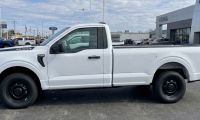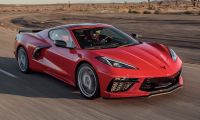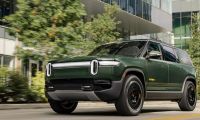One can only imagine where Tesla (and the world) would be today if they had delivered a $25,000 EV several years ago. Instead, Tesla swerved from its original mission of delivering low-priced EVs by pursuing self-driving, Robotaxi, Cybertruck, and the Optimus robot.
In 2006, Tesla published their “Secret Tesla Motors Master Plan,” which outlined Tesla’s strategy to accelerate the world’s transition to sustainable energy by starting with a premium-priced electric sports car (the Roadster). Their strategy was to parlay the profits to develop progressively cheaper EVs. Tesla stated the following: “The strategy of Tesla is to enter at the high end of the market, where customers are prepared to pay a premium, and then drive down market as fast as possible to higher unit volume and lower prices with each successive model.” This culminated in actually delivering a luxury full-size sedan (Model S), a premium mid-size sedan (the Model 3), and the world’s best-selling premium crossover SUV (Model Y). However, to date, Tesla has failed to deliver an affordable EV.
Why to People Buy Electric Vehicles?
The following are the top reasons why consumers purchase electric vehicles:
- Lower operating costs (much cheaper per mile to drive)
- Environmental benefits
- Government incentives
- Convenient home charging (never have to go to a gas station)
- Performance, instant torque, and smooth driving
- Advanced technology and features (over-the-air updates, infotainment screens)
- Long-term cost savings (no gas expenses and much lower maintenance costs)
- Energy independence (the option to charge with solar panels)
You might notice that nowhere on this list is self-driving mentioned. In April, 2024, Tesla posted that they had cumulatively invested over $10 billion in developing its Full Self-Driving (FSD) program. Competitively, you can argue that Tesla is way (decades) behind Waymo. This is because Tesla’s core competency is designing and cost-effectively manufacturing vehicles. To see them getting back on track is very exciting.
The Race is on Between Tesla and Slate Auto to Deliver a Sub-$30,000 EV
Tesla appears to be leveraging its vast knowledge to reinvent how cars are built. The Model 2 will further leverage their Giga Casting innovation to replace hundreds of parts with just two massive pieces. Their “unboxed process” will eliminate the traditional assembly line. It is assumed that the Model 2 will look similar to the recently revealed Robotaxi because they share engineering and manufacturing platforms.
The Tesla Model 2 is positioned to redefine the compact electric vehicle segment by combining affordability, innovation, and efficiency.
Priced around $25,000, the Model 2 incorporates Tesla's platform convergence strategy, sharing 46% of its components with the Model 3 and Y, while introducing 38% next-gen parts. This hybrid approach slashes production time, cost, and complexity, enabling a launch cycle of just 18 months. Key innovations include a simplified cooling system, direct cell-to-pack battery design, and a lightweight integrated flux motor. The Model 2 is expected to have up to 342 miles of range and 0–60 mph acceleration as quick as 3.9 seconds. Its "Max Space" platform offers class-leading interior volume (98 cubic feet) despite compact exterior dimensions, outpacing competitors like the BYD Dolphin and Chevy Bolt. Aerodynamic efficiency with a drag coefficient of 0.19 and weight savings further enhance performance, range, and cost-effectiveness. With superior cabin comfort, intelligent storage, and an industry-leading energy-to-weight ratio, the Model 2 is engineered to provide a premium Tesla experience at an accessible price. Tesla’s innovation in both manufacturing and design positions the Model 2 as a potential industry disruptor, possibly making EV ownership more affordable than ever before.
Slate Auto, a Michigan-based startup backed by Jeff Bezos, is launching a no-frills, all-electric pickup truck priced around $27,500. Its Slate Truck is expected to arrive in late 2026.

Every truck will be identical aside from two battery options: 53 kWh (150-mile range) or 84 kWh (240-mile range). Built for simplicity, it features plastic, unpainted panels, wind-up windows, no infotainment screen, and steel wheels, focusing on affordability and repairability. Ranging from a beach buggy to a five-seat SUV, the design emphasizes modularity with removable body panels, customizable lighting elements, and reconfigurable interiors. With no mechanical expertise, users can customize the truck extensively using 3D-printed accessories and wraps. The barebones cabin includes manual controls, a basic digital gauge display, and optional phone or tablet-based infotainment. Despite the low cost, safety hasn’t been compromised. It includes eight airbags, forward collision warning, and auto-braking. Trucks will be manufactured in a former printer factory in Indiana, aiming for 150,000 units annually. With U.S. sourcing, a unique customization model, and serious funding, Slate Auto might just redefine the affordable electric vehicle market, offering a fun, practical EV that owners can easily customize to make their own.
Let’s Compare the Model 2 and Slate Truck Side-by-side
Tesla Model 2
- Category: Compact electric hatchback (5-door)
- Price: Estimated starting around $25,000
- Range: Expected between 250–300 miles per charge
- Performance: Anticipated 0–60 mph in under 6 seconds
- Features: Likely to include Tesla's advanced software suite, Autopilot capabilities, and a minimalist interior design
- Production: Deliveries expected to begin in 2026
Slate Truck
- Category: Compact electric pickup truck with modular design (truck/SUV/buggy)
- Price: Base model starting at $27,500
- Range: 150 miles with 52.7 kWh battery, 240 miles with 84.3 kWh battery
- Performance: 201 horsepower, 0–60 mph in approximately 8 seconds
- Features: Minimalist design with manual windows, no built-in infotainment system, and over 100 DIY-accessible accessories, including a conversion kit to transform the truck into a 5-seat SUV
- Production: Deliveries expected to begin in late 2026
With its recent unveiling, the Slate Truck is being compared to the Toyota Tacoma. Here’s a post on Reddit by summitstrong that makes an interesting comparison.
“I custom ordered my 2014 Taco 4D SR5 in 2014 for $32k and still loving it. With ever rising gas prices and the fact that I now have to commute longer to work, I’ve been intrigued by EV trucks. They’re all too damn expensive! Hence my interest in an EV truck that is nice, but bare bones and that you can build out exactly how the consumer wants it. Slate will offer 100+ mods you can add on. I can only imagine the aftermarket options will offer even more”.
Also watch Elon Musk saying his next product will be the most important Tesla has ever produced in this video from the Torque News Youtube Channel.
Please drop your thoughts in the comments below.
Are you in the market for a less expensive EV? What are you considering?
What do you like/dislike about the Model 2 and the Slate Truck?
Chris Johnston is the author of SAE’s comprehensive book on electric vehicles, "The Arrival of The Electric Car." His coverage on Torque News focuses on electric vehicles. Chris has decades of product management experience in telematics, mobile computing, and wireless communications. Chris has a B.S. in electrical engineering from Purdue University and an MBA. He lives in Seattle. When not working, Chris enjoys restoring classic wooden boats, open water swimming, cycling and flying (as a private pilot). You can connect with Chris on LinkedIn and follow his work on X at ChrisJohnstonEV.












Comments
The same pattern we see with…
Permalink
The same pattern we see with artisan brands - start premium to prove the craft works, then figure out how to scale without losing what made it special.
Meanwhile, in the late 70s…
Permalink
Meanwhile, in the late 70s and early 80s, Toyota and Honda broke the 'high quality-high price" myth by producing cheaper vehicles with better quality and higher resale values!
Very smart at the time…
Permalink
Very smart at the time. Probably still smart today. Better than the “free” bait strategy.
One more thing you’re…
Permalink
One more thing you’re describing economic behavior in terms of the absence of politics. It’s politics that created demand for electric cars. And it’s politics that tried to increase and even force car buyers to buy electric. That’s how the Marxist think about entrepreneurialism. Musk was the left, darling Until he played ball with Donald Trump. When you think about it, an entrepreneur is a lot different than a president of the United States. You are mixing apples with grapes or maybe even raisins. You’re so far out of touch. The Greeks use the word SOPHISTRY. Your argument is logical, but it makes no sense compared to reality.
You are so wrong and it’s…
Permalink
You are so wrong and it’s pathetic. Tesla established the premium market because people with money were willing to spend it on electric cars. Electric cars are more expensive to manufacture and engineer when you’re starting from zero. Now he Elon Musk has established the premium segment and has been given a great deal of credit for his brilliance.. There is prestige in a Tesla, even though idiotic politicians are trying to tear it apart. You’re observing the obvious and not the real strategy. You’re not as smart as you think.
Hey Ron, thanks for your…
Permalink
In reply to You are so wrong and it’s… by Ron Salvo (not verified)
Hey Ron, thanks for your comment. Agreed, none of us are as smart as we think we are. I’d still wish that Tesla would have launched a $25K EV several years ago to blunt the foreign (i.e. BYD) competition with a real competitive offering rather than having to rely on protective tariffs.
Truly brilliant reply, Ron. …
Permalink
In reply to You are so wrong and it’s… by Ron Salvo (not verified)
Truly brilliant reply, Ron. Some people understand only selective facts. People that actually follow Tesla know that cost has always been fiducial to their every move. In fact, the Robotaxi is mostly about eliminating the cost of that second car. Without Tesla, there are no EV's and no charging network. They are about to leave everyone else (domestic, in the dust).